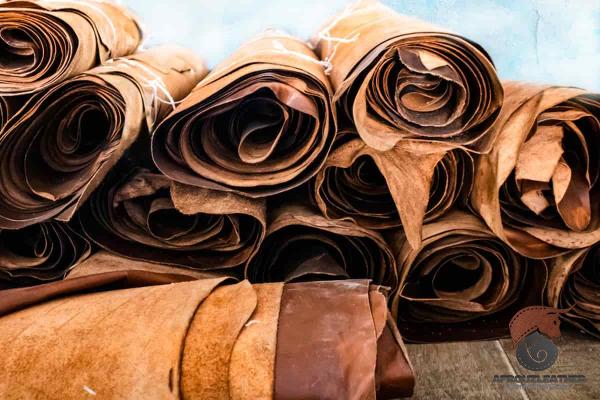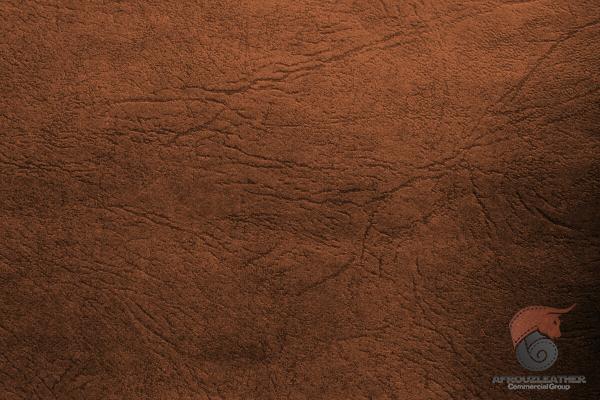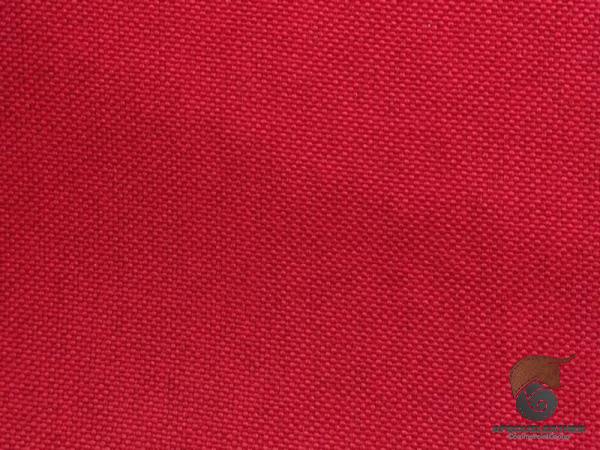Leather has been one of the most popular materials used in the fashion and upholstery industries for its durability, aesthetic appeal, and natural characteristics. Among the various types of leather available, sheep and cow leather are two commonly used variations. Differentiating between these types can help individuals make informed decisions regarding their leather products. This article aims to provide a comparative analysis of sheep leather and cow leather, focusing on factors such as quality, texture, durability, and cost. Sheep Leather: Sheepskin is widely regarded as a high-quality and luxurious leather due to its softness, lightweight nature, and exceptional warmth. The compact and uniform fiber structure of sheep leather makes it highly resistant to rips and tears. The natural elasticity of the fibers provides a supple feel, making it an ideal choice for fashion garments, handbags, and gloves. Additionally, sheepskin is well-known for its excellent insulation properties, making it suitable for producing winter coats and jackets.
leather
 One of the distinctive features of sheep leather is its fine grain texture. This smooth and velvety feel adds an elegant touch to leather products, making them highly sought after in the high-end fashion industry. The natural drape and fluidity of the material further enhance its appeal for creating design-driven leather goods. Cow Leather: Cow leather, also referred to as bovine leather, is the most commonly used type of leather due to its availability, durability, and versatility. This leather type is known for its strength and toughness, making it highly suitable for products such as shoes, belts, wallets, and upholstery materials. The density and thickness of cow leather allow it to withstand extensive wear and tear, ensuring longevity. Compared to sheep leather, cow leather has a coarser grain texture. This coarse texture creates a rugged and robust appearance, adding a touch of masculinity to leather products. The durability of cow leather makes it a preferred choice in industries that require sturdy leather, such as automotive, furniture, or equestrian.
One of the distinctive features of sheep leather is its fine grain texture. This smooth and velvety feel adds an elegant touch to leather products, making them highly sought after in the high-end fashion industry. The natural drape and fluidity of the material further enhance its appeal for creating design-driven leather goods. Cow Leather: Cow leather, also referred to as bovine leather, is the most commonly used type of leather due to its availability, durability, and versatility. This leather type is known for its strength and toughness, making it highly suitable for products such as shoes, belts, wallets, and upholstery materials. The density and thickness of cow leather allow it to withstand extensive wear and tear, ensuring longevity. Compared to sheep leather, cow leather has a coarser grain texture. This coarse texture creates a rugged and robust appearance, adding a touch of masculinity to leather products. The durability of cow leather makes it a preferred choice in industries that require sturdy leather, such as automotive, furniture, or equestrian.
Specifications of leather
 Durability and Longevity: When it comes to durability, both sheep leather and cow leather have their advantages. Sheepskin’s tight grain structure provides exceptional resistance to damage caused by everyday use. However, cow leather, being thicker and denser, exhibits greater abrasion resistance, making it suitable for heavy-duty applications. The longevity of leather products is also influenced by how well they are cared for. Properly maintained sheepskin and cow leather products have the potential to last for many years. Regular conditioning, protection from moisture and sunlight, and avoiding exposure to harsh chemicals are crucial for preserving the integrity and prolonging the lifespan of both types of leather. Texture and Aesthetic Appeal: Sheep leather’s fine and smooth grain texture offers a luxurious and refined appearance, making it highly desirable for fashion and accessory applications. The supple nature of sheepskin allows it to mold easily to the body, providing optimal comfort and flexibility. Cow leather, on the other hand, boasts a larger, more pronounced grain pattern, giving it a rugged and bold aesthetic. This texture is often admired for its natural character, creating a sense of authenticity and timelessness in leather products.
Durability and Longevity: When it comes to durability, both sheep leather and cow leather have their advantages. Sheepskin’s tight grain structure provides exceptional resistance to damage caused by everyday use. However, cow leather, being thicker and denser, exhibits greater abrasion resistance, making it suitable for heavy-duty applications. The longevity of leather products is also influenced by how well they are cared for. Properly maintained sheepskin and cow leather products have the potential to last for many years. Regular conditioning, protection from moisture and sunlight, and avoiding exposure to harsh chemicals are crucial for preserving the integrity and prolonging the lifespan of both types of leather. Texture and Aesthetic Appeal: Sheep leather’s fine and smooth grain texture offers a luxurious and refined appearance, making it highly desirable for fashion and accessory applications. The supple nature of sheepskin allows it to mold easily to the body, providing optimal comfort and flexibility. Cow leather, on the other hand, boasts a larger, more pronounced grain pattern, giving it a rugged and bold aesthetic. This texture is often admired for its natural character, creating a sense of authenticity and timelessness in leather products.
buy leather
 Cost: The cost of sheep leather and cow leather varies based on factors such as quality, availability, and demand. Sheep leather is generally considered more expensive due to its fine grain, lightweight nature, and limited availability. Additionally, the intricate tanning process required for sheepskin contributes to its higher price. Conversely, cow leather is more affordable, especially considering the larger number of hides available due to the abundance of cattle globally. Conclusion: Both sheep leather and cow leather offer unique attributes and are suitable for different applications based on individual preferences. Sheep leather’s softness, lightweight nature, and luxurious texture make it a preferred choice in the fashion industry, particularly for garments and accessories. On the other hand, cow leather’s durability, strength, and coarse texture make it well-suited for heavy-duty applications in industries such as automotive and upholstery. Ultimately, the decision between sheep leather and cow leather depends on the intended use, desired aesthetic appeal, and budget considerations. By understanding the characteristics and qualities of each type, consumers can make informed choices and find leather products that align with their specific needs and preferences.
Cost: The cost of sheep leather and cow leather varies based on factors such as quality, availability, and demand. Sheep leather is generally considered more expensive due to its fine grain, lightweight nature, and limited availability. Additionally, the intricate tanning process required for sheepskin contributes to its higher price. Conversely, cow leather is more affordable, especially considering the larger number of hides available due to the abundance of cattle globally. Conclusion: Both sheep leather and cow leather offer unique attributes and are suitable for different applications based on individual preferences. Sheep leather’s softness, lightweight nature, and luxurious texture make it a preferred choice in the fashion industry, particularly for garments and accessories. On the other hand, cow leather’s durability, strength, and coarse texture make it well-suited for heavy-duty applications in industries such as automotive and upholstery. Ultimately, the decision between sheep leather and cow leather depends on the intended use, desired aesthetic appeal, and budget considerations. By understanding the characteristics and qualities of each type, consumers can make informed choices and find leather products that align with their specific needs and preferences.

Your comment submitted.